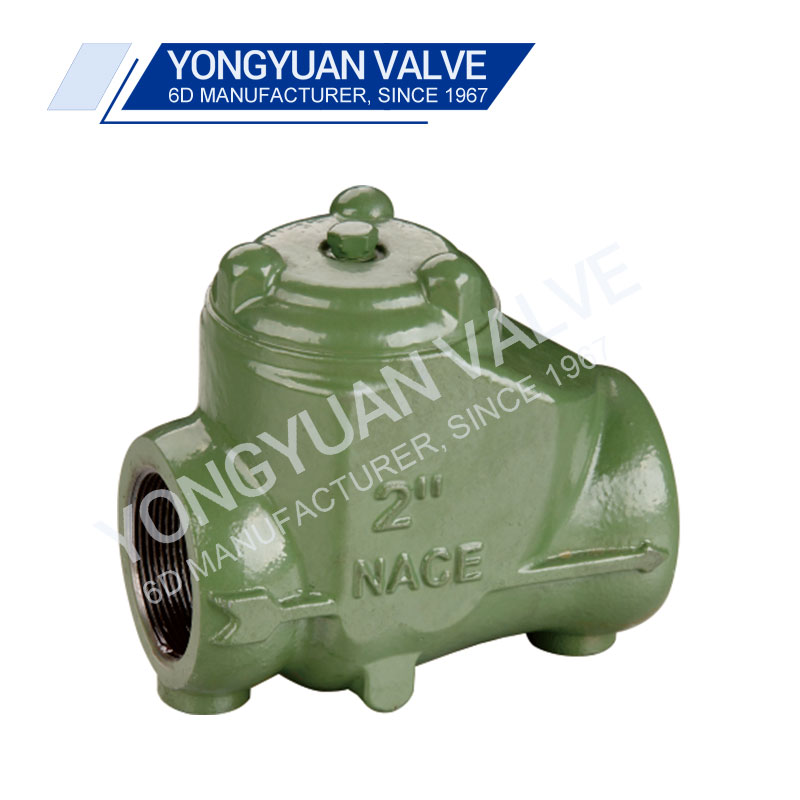Why Are Check Valves Critical for Preventing Backflow in Industrial Systems?
2025-08-07
In the complex network of industrial pipelines, where fluids, gases, and slurries flow under varying pressures and conditions, maintaining directional flow is not just a matter of efficiency—it is a critical safety requirement. Check valves, often referred to as non-return valves, serve as silent guardians in these systems, allowing flow in one direction while preventing dangerous backflow that can damage equipment, contaminate processes, or even cause catastrophic failures. From water treatment plants and oil refineries to chemical processing facilities and HVAC systems, check valves play an indispensable role in preserving the integrity of fluid dynamics. For engineers, plant operators, and maintenance professionals, understanding why high-quality check valves are essential can mitigate risks, reduce downtime, and ensure compliance with industry standards. This guide explores the vital function of check valves in industrial systems, highlights key features that define their performance, details specifications of our top-tier models, and addresses common questions to support informed decision-making.
Trending News Headlines: Top Searches on Check Valves
- "How Check Valves Prevent Contamination in Food Processing"
- "Spring-Loaded vs. Swing Check Valves: Which Is Right for Your System?"
These headlines underscore the valve’s critical role in preventing backflow across diverse sectors, from high-pressure industrial settings to hygiene-sensitive environments like food processing. Staying informed about these trends helps professionals select check valves that align with their system’s unique demands.
Why Check Valves Are Indispensable for Industrial Systems
Preventing Equipment Damage and Wear
When fluid flows backward in a pipeline, it can cause pumps, compressors, and other machinery to operate in reverse, leading to premature wear, seal failure, or even motor burnout. For example, in a water distribution system, a sudden drop in pressure can cause water to flow back into the pump, reversing its rotation and damaging internal components. A check valve installed near the pump outlet stops this backflow, protecting the equipment from mechanical stress and extending its lifespan. In high-speed systems—such as those in power plants or chemical processing—this protection is even more critical, as reverse flow can generate shockwaves (water hammer) that rupture pipes or damage valves.
Safeguarding Process Integrity and Contamination
In industries where fluid purity is paramount—such as pharmaceuticals, food and beverage, or chemical processing—backflow can lead to cross-contamination. For instance, in a food processing plant, if untreated water flows back into a potable water line, it can introduce bacteria or chemicals, compromising product safety and violating regulatory standards. Check valves create a physical barrier that prevents contaminated fluids from mixing with clean or process-critical fluids, ensuring compliance with strict hygiene guidelines (e.g., FDA, EU 10/2011). In chemical plants, where incompatible substances are transported through adjacent pipelines, check valves prevent dangerous reactions that could occur if fluids backflow into the wrong line.
Maintaining System Efficiency and Pressure Control
Backflow disrupts the balance of pressure within a pipeline, leading to inefficiencies and unpredictable flow rates. For example, in a heating system, reverse flow can cause hot water to circulate in the wrong direction, reducing heating efficiency and increasing energy costs. Check valves maintain consistent pressure by allowing flow only when the upstream pressure exceeds the downstream pressure, ensuring that systems operate as designed. This stability is crucial in complex networks with multiple branches, where pressure fluctuations are common, and unregulated backflow could disrupt entire processes.
Enhancing Safety in Hazardous Environments
In industries handling flammable, toxic, or corrosive fluids—such as oil and gas, petrochemicals, or wastewater treatment—backflow poses significant safety risks. A reverse flow of flammable gas, for example, could lead to leaks, explosions, or exposure to harmful substances. Check valves act as a fail-safe, preventing such backflow and reducing the likelihood of accidents. In emergency situations, such as a pipeline rupture, check valves automatically close, isolating the damaged section and limiting the spread of hazardous materials, protecting workers and the environment.
Key Features to Prioritize in a Check Valve
Valve Type and Design
Check valves are available in several designs, each suited to different applications:
- Swing Check Valves: Feature a flapper that swings open to allow flow and closes due to gravity or backpressure. Ideal for low-to-medium pressure systems with clean fluids (e.g., water, oil) and horizontal pipelines.
- Spring-Loaded Check Valves: Use a spring to close the valve disc, ensuring quick shutoff even in vertical pipelines or low-pressure systems. Suitable for high-flow rates and applications with pulsating flow (e.g., pumps, compressors).
- Ball Check Valves: Contain a ball that seats against an orifice to stop backflow. Compact and resistant to clogging, making them ideal for small-diameter lines or fluids with suspended solids (e.g., wastewater).
- Butterfly Check Valves: Combine a butterfly valve’s design with a check mechanism, suitable for large-diameter pipelines and high-flow systems (e.g., water treatment plants).
The valve’s body, disc, and seals must resist corrosion, erosion, and chemical attack from the fluid being handled:
- Brass: Cost-effective for low-pressure, non-corrosive applications (e.g., plumbing, HVAC).
- Stainless Steel (304/316): Corrosion-resistant, ideal for food processing, pharmaceuticals, and marine environments.
- Cast Iron: Durable for high-pressure, high-temperature industrial systems (e.g., steam lines) with non-corrosive fluids.
- Specialty Alloys (Hastelloy, Monel): For extreme conditions, such as acidic or high-temperature fluids in chemical processing.
Pressure and Temperature Ratings
Check valves are rated for maximum operating pressure (PSI) and temperature (°F/°C), which must match your system’s conditions. A valve designed for 150 PSI at 200°F will fail in a 1,000 PSI steam line operating at 600°F. Look for valves with ANSI class ratings (e.g., Class 150, 300, 600) to ensure compatibility with standardized system pressures.
Flow Characteristics and Pressure Drop
The valve’s design affects pressure drop—the reduction in pressure as fluid flows through it. Swing check valves typically have lower pressure drop than spring-loaded models, making them better for high-flow systems. However, spring-loaded valves offer faster closure, which is critical in preventing water hammer. Evaluate your system’s flow rate and pressure sensitivity to choose a valve that balances efficiency and performance.
End Connections
The valve must connect securely to your pipeline. Common end types include threaded (NPT/BSP), flanged (ANSI/ISO), and welded (socket weld/butt weld) for high-pressure applications. Compatibility with existing pipeline connections ensures a leak-free installation and reduces installation time.
Our Industrial Check Valve Specifications
|
Feature
|
YCV-100 Swing Check Valve (Brass)
|
YCV-304 Spring-Loaded Check Valve (Stainless Steel)
|
YCV-600 Ball Check Valve (Cast Iron)
|
|
Body Material
|
Forged brass (C37700)
|
316 Stainless Steel
|
Ductile cast iron (ASTM A536)
|
|
Disc/Ball Material
|
Brass
|
316 Stainless Steel
|
Chrome-plated cast iron
|
|
Seal Material
|
EPDM
|
PTFE
|
Nitrile (NBR)
|
|
Pressure Rating
|
150 PSI (WOG)
|
600 PSI (WOG)
|
300 PSI (WOG)
|
|
Temperature Range
|
-20°F to 250°F (-29°C to 121°C)
|
-40°F to 450°F (-40°C to 232°C)
|
-20°F to 400°F (-29°C to 204°C)
|
|
Size Range
|
1/4" to 2"
|
1/2" to 6"
|
1" to 8"
|
|
End Connections
|
NPT threaded
|
NPT threaded, flanged (ANSI 150)
|
Flanged (ANSI 150), socket weld
|
|
Design Type
|
Swing (flapper)
|
Spring-loaded poppet
|
Ball-type
|
|
Flow Direction
|
Horizontal (preferred)
|
Horizontal/vertical
|
Horizontal/vertical
|
|
Certifications
|
NSF/ANSI 61 (drinking water)
|
3A (food grade), ISO 9001
|
ISO 9001, CE
|
|
Ideal Applications
|
Plumbing, HVAC, low-pressure water systems
|
Chemical processing, food & beverage, marine
|
Industrial steam lines, wastewater, high-flow water systems
|
|
Warranty
|
2 years
|
3 years
|
3 years
|
All our check valves undergo rigorous testing, including pressure testing at 1.5 times the rated pressure, leakage detection, and material analysis, to ensure compliance with international standards. Precision machining ensures tight seals and smooth operation, minimizing pressure drop and maximizing service life.
FAQ: Common Questions About Check Valves



